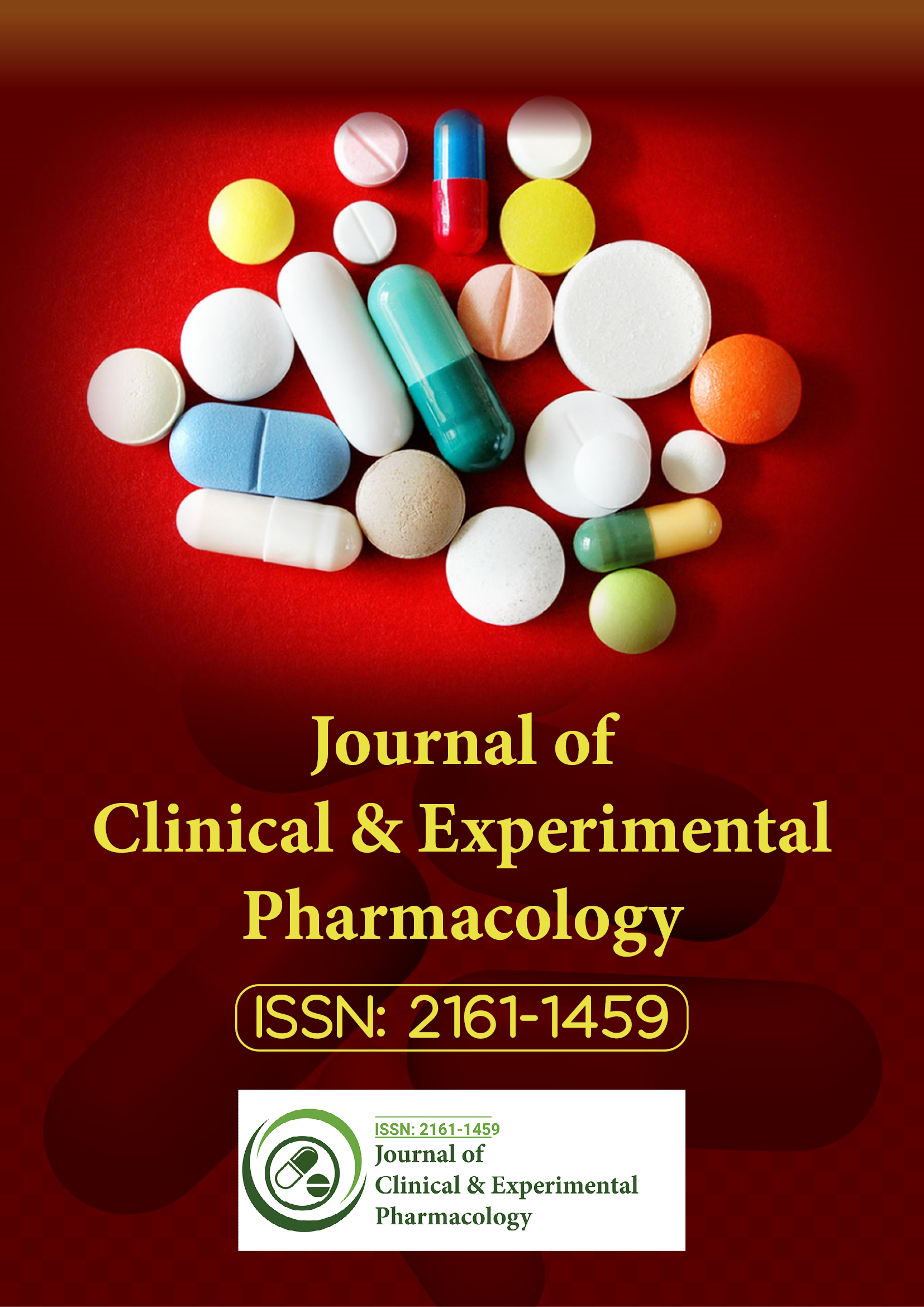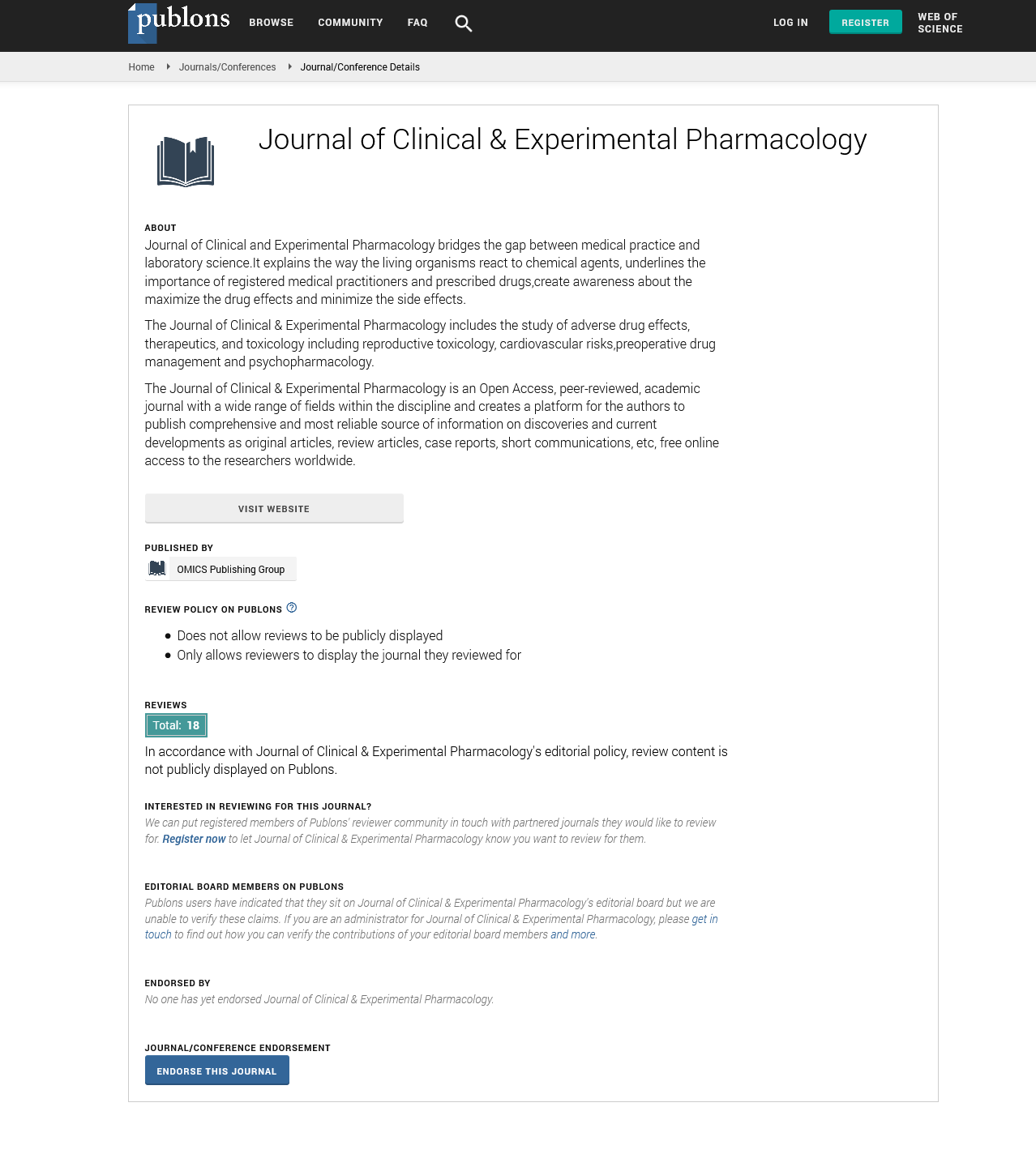Indexed In
- Open J Gate
- Genamics JournalSeek
- China National Knowledge Infrastructure (CNKI)
- Ulrich's Periodicals Directory
- RefSeek
- Hamdard University
- EBSCO A-Z
- OCLC- WorldCat
- Publons
- Google Scholar
Useful Links
Share This Page
Journal Flyer

Open Access Journals
- Agri and Aquaculture
- Biochemistry
- Bioinformatics & Systems Biology
- Business & Management
- Chemistry
- Clinical Sciences
- Engineering
- Food & Nutrition
- General Science
- Genetics & Molecular Biology
- Immunology & Microbiology
- Medical Sciences
- Neuroscience & Psychology
- Nursing & Health Care
- Pharmaceutical Sciences
Short Communication - (2025) Volume 15, Issue 3
Advances in Pediatric Pharmacology: Addressing Challenges in Drug Dosing and Formulation
Chen Kim*Received: 06-Jun-2025, Manuscript No. CPECR-25-29373; Editor assigned: 09-Jun-2025, Pre QC No. CPECR-25-29373 (PQ); Reviewed: 23-Jun-2025, QC No. CPECR-25-29373; Revised: 30-Jun-2025, Manuscript No. CPECR-25-29373 (R); Published: 07-Jul-2025, DOI: 10.35248/2161-1459.25.15.489
Description
Pediatric pharmacology presents a distinct set of challenges due to the dynamic nature of growth and development in children, which affects drug absorption, distribution, metabolism and excretion. Unlike adults, children are not simply smaller in size but undergo continuous physiological changes that influence their response to medications. Historically, children have been underrepresented in clinical trials, leading to a lack of age-appropriate dosing guidelines and formulations [1]. In recent years, concerted efforts have been made to address these gaps through regulatory initiatives, targeted research and innovation in drug formulation and delivery.
One of the core issues in pediatric pharmacology is determining appropriate dosing regimens. Drug metabolism pathways vary significantly with age. For instance, the activity of liver enzymes responsible for drug metabolism, such as those in the cytochrome P450 system, is often reduced in neonates and increases with age. Renal function also matures over time, influencing the clearance of drugs that are excreted through the kidneys. As a result, neonates, infants and adolescents may require different doses for the same drug, not just based on weight or body surface area, but also on developmental pharmacokinetics [2-5].
Dosing errors in pediatrics are more common than in adults, largely due to the need for individualized calculations and the off-label use of medications. Many drugs lack formal pediatric labeling, forcing clinicians to rely on extrapolated data or clinical experience. To address this, regulatory frameworks such as the Pediatric Research Equity Act (PREA) and the Best Pharmaceuticals for Children Act (BPCA) in the United States have encouraged and, in some cases, mandated pediatric studies. Similar initiatives have been adopted in Europe and other regions, leading to a growing body of pediatric-specific pharmacological data [6].
The development of child-friendly formulations is another critical area in pediatric pharmacology. Young children may have difficulty swallowing tablets or capsules, making liquid formulations more appropriate. However, preparing stable, palatable and accurately dosed liquid medications presents technical challenges. Flavors, preservatives and sweeteners must be carefully selected to ensure safety and acceptability. Additionally, some drugs are inherently unstable in liquid form or may require specific excipients that are not approved for pediatric use.
Recent advances have introduced new dosage forms designed specifically for children. These include orally disintegrating tablets, mini-tablets, chewable formulations and medicated oral films that dissolve in the mouth. Such formats offer flexibility in administration and improve adherence. Moreover, multiparticulate systems like sprinkles and granules that can be mixed with food or beverages are gaining traction in pediatric care. These formulations allow for dose flexibility and can be more acceptable to children than traditional tablets.
Transdermal, buccal and rectal delivery routes are also being explored to bypass oral administration challenges. These methods can be particularly useful in children with gastrointestinal issues, difficulty swallowing, or poor compliance. For example, transdermal patches provide controlled release over extended periods and minimize systemic peaks and troughs. However, skin permeability varies by age and the risk of irritation or unintentional exposure must be carefully considered.
Pharmacogenomics is beginning to inform pediatric pharmacology by identifying genetic factors that influence drug metabolism and response. Genetic testing may help predict which children are at risk for adverse drug reactions or therapeutic failure, enabling more personalized therapy [7]. This is particularly relevant for drugs with narrow therapeutic indices or those metabolized by polymorphic enzymes, such as thiopurines or antidepressants.
Clinical trials involving children require special considerations to ensure ethical standards and scientific validity. Informed consent must be obtained from parents or guardians and assent from older children. Age-appropriate outcome measures, stratification by developmental stage and safety monitoring protocols must be incorporated into study designs [8]. Recent efforts have focused on developing pediatric trial networks and data-sharing platforms to accelerate research and improve coordination across institutions.
Electronic health records and real-world data are increasingly used to gather information on drug use and outcomes in pediatric populations. Observational studies, pharmacoepidemiologic surveillance and registries contribute valuable insights that complement findings from randomized trials [9, 10]. These data help refine dosing recommendations, detect rare adverse events and evaluate long-term effects of medications in children.
Training and education of healthcare professionals in pediatric pharmacology are essential for ensuring safe and effective medication use. Pharmacists, nurses and physicians must be equipped with the knowledge to interpret pediatric dosing guidelines, recognize age-specific pharmacokinetic considerations and counsel families appropriately. In addition, communication strategies tailored to children and their caregivers support medication adherence and safety.
In conclusion, the field of pediatric pharmacology has made significant strides in addressing the unique challenges of drug dosing and formulation for children. Through regulatory support, dedicated research and formulation innovation, a growing number of medications are now available in child-appropriate forms with age-specific dosing guidance. Continued efforts to include children in clinical research, understand developmental pharmacokinetics and adopt personalized medicine approaches will further enhance the safety and effectiveness of pediatric drug therapy. As the field evolves, collaboration among clinicians, researchers, industry and regulatory agencies will be essential to ensure that children receive the same level of pharmacologic care and innovation as adults.
References
- Leonetti B, Perin A, Ambrosi EK, Sponchia G, Sgarbossa P, Castellin A, et al. Mesoporous zirconia nanoparticles as drug delivery systems: Drug loading, stability and release. J Drug Deliv Sci Technol. 2021;61:102189.
- Nguyen VD, Min HK, Kim DH, Kim CS, Han J, Park JO, Choi E. Macrophage-mediated delivery of multifunctional nanotherapeutics for synergistic chemo-photothermal therapy of solid tumors. ACS Appl Mater Interfaces. 2020;12(9):10130-10141.
[Crossref] [Google Scholar] [PubMed]
- Ta HT, Prabhu S, Leitner E, Jia F, von Elverfeldt D, Jackson KE, et al. Enzymatic single-chain antibody tagging: A universal approach to targeted molecular imaging and cell homing in cardiovascular disease. Circ Res. 2011;109(4):365-373.
[Crossref] [Google Scholar] [PubMed]
- Laakkonen P, Vuorinen K. Homing peptides as targeted delivery vehicles. Integr Biol (Camb). 2010;2(7-8):326-337.
[Crossref] [Google Scholar] [PubMed]
- Liang T, Zhang R, Liu X, Ding Q, Wu S, Li C, et al. Recent advances in macrophage-mediated drug delivery systems. Int J Nanomedicine. 2021:2703-2714.
[Crossref] [Google Scholar] [PubMed]
- Bennett B. Isolation and cultivation in vitro of macrophages from various sources in the mouse. Am J Pathol. 1966;48(1):165.
[Google Scholar] [PubMed]
- Garash R, Bajpai A, Marcinkiewicz BM, Spiller KL. Drug delivery strategies to control macrophages for tissue repair and regeneration. Exp Biol Med (Maywood). 2016;241(10):1054-1063.
[Crossref] [Google Scholar] [PubMed]
- Cohen AB, Cline MJ. The human alveolar macrophage: Isolation, cultivation in vitro and studies of morphologic and functional characteristics. J Clin Invest. 1971;50(7):1390-1398.
[Crossref] [Google Scholar] [PubMed]
- Kim S, Shi Y, Kim JY, Park K, Cheng JX. Overcoming the barriers in micellar drug delivery: Loading efficiency, in vivo stability and micelle-cell interaction. Expert Opin Drug Deliv. 2010;7(1):49-62.
[Crossref] [Google Scholar] [PubMed]
- Wang HF, Liu Y, Yang G, Zhao CX. Macrophage-mediated cancer drug delivery. Mater Today Sustain. 2021;11:100055.
Citation: Kim C (2025). Advances in Pediatric Pharmacology: Addressing Challenges in Drug Dosing and Formulation. J Clin Exp Pharmacol. 15:489.
Copyright: © 2025 Kim C. This is an open-access article distributed under the terms of the Creative Commons Attribution License, which permits unrestricted use, distribution and reproduction in any medium, provided the original author and source are credited.

